Looking for the best restaurant in Hanoi? Whether you’re craving a Michelin-starred dining experience or a plastic-stool meal that locals swear by, this 2025 guide has you covered. We’ve curated the city’s must-try spots — from elegant fine dining to sizzling street stalls — and even the legendary restaurant where Obama and Anthony Bourdain shared a meal. Get ready to explore the full spectrum of Hanoi’s vibrant food scene, one unforgettable bite at a time.
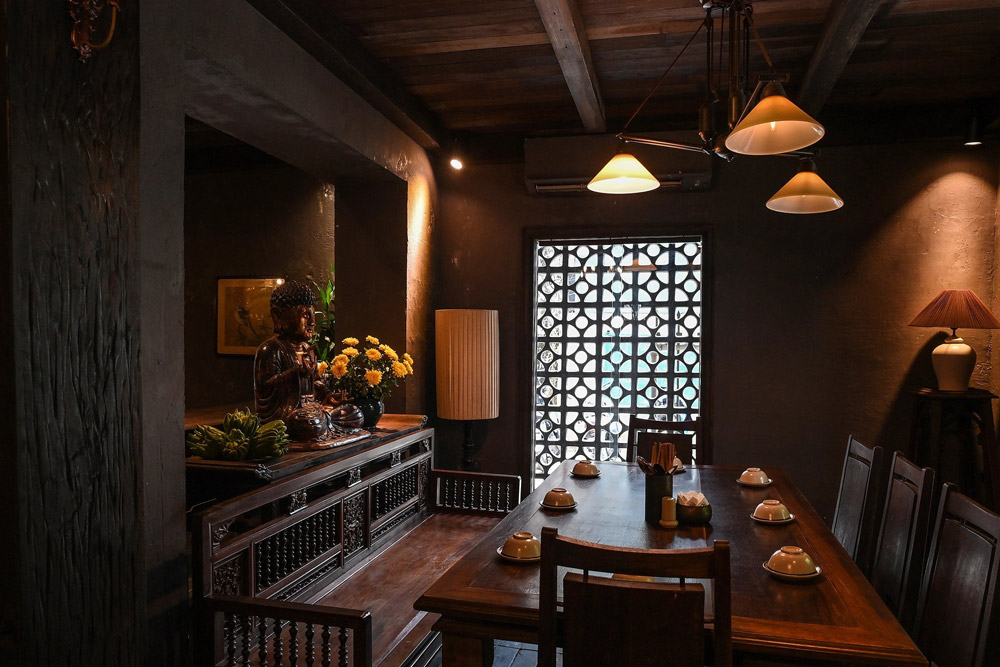
Hanoi isn’t just a city where you eat well — it’s a city that lives and breathes food. Every corner, from its polished dining rooms to its smoky street-side stalls, tells a different story of flavor, history, and pride. Here, the definition of the best restaurant in Hanoi depends entirely on what kind of experience you’re looking for. It could be a Michelin-starred restaurant with delicate plating and impeccable service — or a family-run noodle stall that’s been perfecting one recipe for half a century. The beauty of Hanoi is that both can deliver a meal you’ll remember forever.
As October 2025 brings cool breezes and golden light to the city, Hanoi’s dining scene is more exciting than ever. This guide is your compass through it all — whether you’re seeking the luxury of fine dining, the comfort of traditional Vietnamese flavors, or the kind of street food that once impressed presidents. From Bún Chả Hương Liên, where Obama and Bourdain famously dined, to the new wave of Michelin-recognized restaurants redefining Vietnamese cuisine, we’ll help you discover the perfect spot for every craving, budget, and moment.
So loosen your belt, grab your chopsticks (or a fork, if you must), and get ready to taste your way through the soul of Vietnam’s capital — one unforgettable bite at a time.
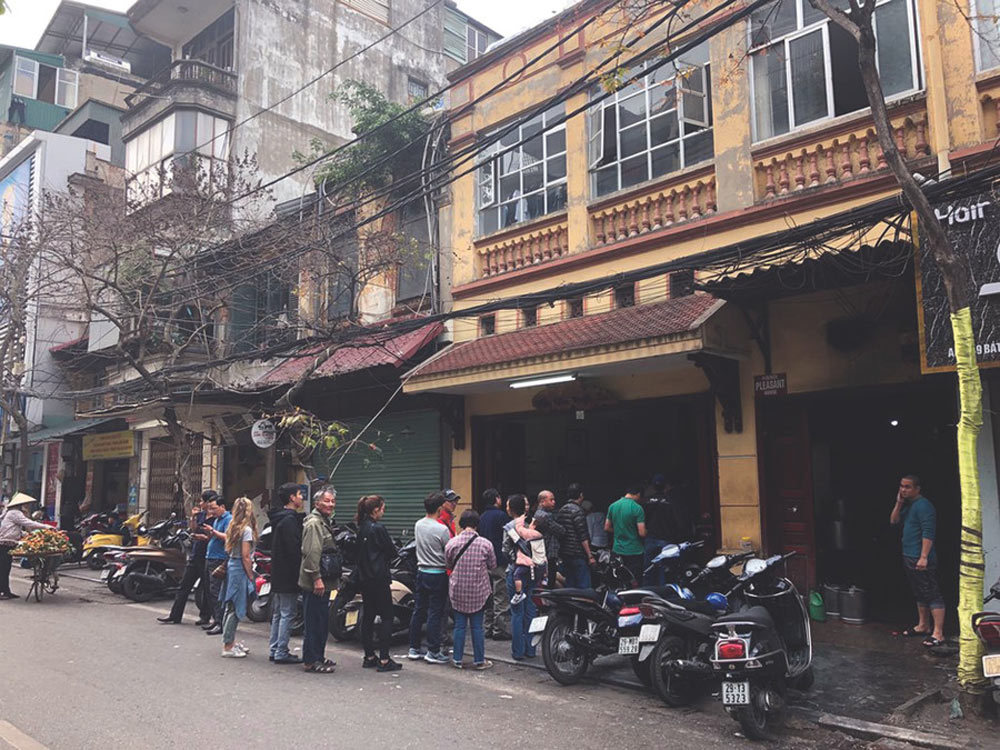
Before diving into where to eat, let’s talk about what to eat — because understanding Hanoi’s most iconic dishes is the key to truly appreciating its food scene. Every traveler who comes here asks the same question: “What is Hanoi famous for?” The answer lies in four legendary dishes that define the city’s culinary identity.
These “Big Four” aren’t just must-tries; they’re the foundation of every great dining experience in Hanoi. Whether you’re sitting on a sidewalk stool in the Old Quarter or at a fine-dining restaurant reimagining tradition, these dishes will always tell you the story of the city — one spoonful at a time.
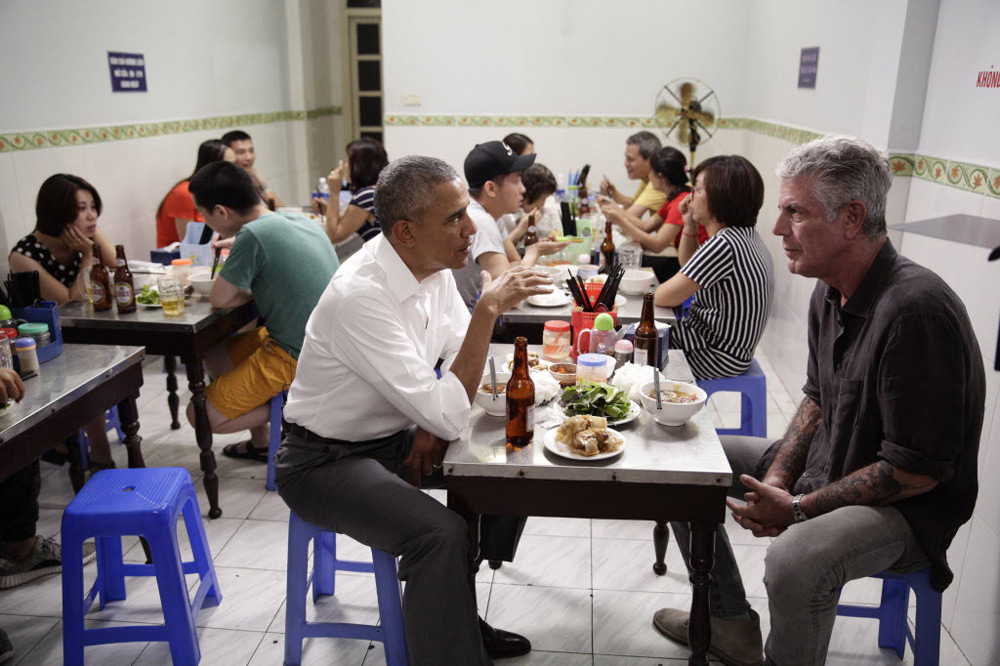
Hanoi’s dining scene is a fascinating mix of humble and haute — where smoky street-side grills share the same cityscape as world-class Michelin-starred restaurants. Whether you want to squeeze onto a plastic stool with locals or enjoy a multi-course tasting menu in a serene dining room, this city delivers both, beautifully. Here’s where to start your culinary adventure through the best restaurants in Hanoi, from timeless classics to modern masterpieces.
The foundation of Hanoian cuisine rests upon legendary establishments, often family-run for generations, that have perfected a single dish. These are not just restaurants but cultural institutions, celebrated for their unwavering consistency, remarkable value, and, in recent years, their international acclaim.
For many international visitors, one question precedes all others: "Where did Obama and Bourdain eat in Hanoi?" They famously shared a meal at Bún Chả Hương Liên, a bustling, authentic eatery that has since earned a Michelin Bib Gourmand for its incredible value and flavor. The 2016 visit transformed this local favorite into a global landmark overnight. The experience is a dive into the city’s unpretentious dining culture; a multi-story space perpetually filled with the clatter of bowls and a mix of residents and tourists drawn by its unique history. As a permanent tribute, the very table where the former U.S. President and the late celebrity chef sat, complete with the dinnerware and beer bottles from their meal, is now encased in a glass box—a humble shrine to a moment of culinary diplomacy.
The restaurant’s fame is centered on its namesake dish, bún chả—a quintessential Hanoian meal of grilled pork patties and fatty pork slices served in a bowl of sweet and savory dipping sauce, accompanied by a platter of fresh herbs and rice vermicelli noodles. To streamline the experience for the influx of visitors, the restaurant now prominently features the "Combo Obama," which includes a standard portion of bún chả, a crispy crab spring roll (nem hải sản), and a bottle of Hanoi beer, mirroring the historic order.
The immense popularity of Bún Chả Hương Liên illustrates the complex consequences of global fame on a local institution. The initial event created an unprecedented surge in demand, cementing its place on the tourist map and leading to operational changes like the creation of the "Combo Obama." However, this intense spotlight has also invited scrutiny. Some visitors, arriving with towering expectations, have found the experience underwhelming, citing that the food is "not as delicious as it's famous for" and that the service can be strained under the pressure of constant crowds. This phenomenon reveals a common challenge for viral food destinations: the very authenticity that propelled it to fame can become diluted when catering to a high volume of international tourists. A visit to Bún Chả Hương Liên is therefore best approached with managed expectations; it is an opportunity to partake in a unique piece of modern history as much as it is a chance to sample a classic Hanoian dish.
Pho is Hanoi's most famous culinary export, and the city is home to countless purveyors of the iconic noodle soup. Among them, two stand out as titans of the trade, both recognized by Michelin for their excellence yet offering distinct experiences that reflect different philosophies of heritage and service.
Phở Gia Truyền Bát Đàn
With a history spanning over 80 years, Phở Gia Truyền Bát Đàn is an institution defined by its name, which translates to "family heirloom". The experience here is a lesson in Hanoian efficiency and tradition. Long queues are a permanent fixture, a testament to its unwavering popularity. The process is famously spartan: patrons line up to place their order at a single counter, pay in cash, and then carry their own steaming bowl of soup to find a seat at a communal table. This self-service ritual is not a lack of hospitality but an integral part of its authentic charm.
The culinary focus is exclusively on beef pho (phở bò), and the menu is accordingly concise. Diners choose from a few classic cuts of beef, including tái (thinly sliced rare steak that cooks in the hot broth), chín (well-done brisket), and nạm (flank). The undisputed star is the broth—a clear, deeply fragrant, and complex soup simmered for hours to achieve its signature flavor. Locals often enhance their meal by adding quẩy (fried dough sticks) for dipping.
Phở 10 Lý Quốc Sư
Just a short walk from Bát Đàn, Phở 10 Lý Quốc Sư offers another top-tier pho experience but with a more modern approach. While it also commands queues, the operation feels more organized and contemporary. A clean, well-lit interior and a kitchen visible behind a glass partition lend it a more formal restaurant feel compared to Bát Đàn’s raw, street-side energy. Service is known to be professional and efficient, catering to the constant flow of customers.
Like its rival, the restaurant specializes in beef pho, but it presents a slightly broader menu with 10 distinct options featuring various cuts of beef. The broth is consistently praised as hearty and supremely refreshing, with high-quality, tender beef that is said to "melt in the mouth".
Taken together, these two pho legends represent divergent but equally successful strategies for stewarding a culinary tradition. Both have achieved the same prestigious Michelin recognition for a similar high-quality product. Yet, their business models differ significantly. Phở Gia Truyền Bát Đàn thrives on its "heirloom" identity, using its famously limited, split hours to create a sense of scarcity and occasion. The spartan self-service ritual reinforces its uncompromising, old-school authenticity, making a bowl of its pho feel like a pilgrimage. In contrast, Phở 10 Lý Quốc Sư has adapted the traditional product to a more modern, customer-centric service model. Its long, continuous hours make it far more accessible to tourists and locals with varied schedules, while its slightly larger menu and professional service appeal to a broader audience. This demonstrates that even in a market as traditional as Hanoi pho, excellence can be achieved either by remaining steadfastly traditional or by thoughtfully adapting tradition to modern expectations.
Bridging the gap between the raw energy of the street and the formal precision of fine dining are restaurants that elevate traditional, home-style cooking. These establishments offer a comfortable and curated environment to explore the depth and diversity of Vietnamese cuisine.
Tầm Vị offers one of the most unique and culturally resonant Michelin-starred experiences in the world. The restaurant is designed to transport diners to a bygone era, evoking the atmosphere of a vintage Northern Vietnamese tea house with its collection of antique-style wooden furniture, traditional ceramics, and hand-written signs. The focus is not on individual, plated courses but on the communal experience of a traditional Vietnamese family meal, known as cơm nhà.
The culinary philosophy centers on authentic, home-style dishes from Northern Vietnam, intended for sharing. The menu is seasonal and extensive, featuring classic preparations that celebrate the subtlety and depth of the region's cuisine. Signature dishes that have earned praise include Chả Ốc (a delicate ham of freshwater conch seasoned with herbs) and a deeply savory caramelized pork belly with shrimp. Dining at Tầm Vị is an immersion in cultural nostalgia, offering an elevated yet deeply authentic taste of Vietnamese home cooking.
The awarding of a Michelin star to Tầm Vị is profoundly significant. While the guide has historically favored restaurants demonstrating technical innovation or using luxurious ingredients, its recognition of Tầm Vị validates a different kind of excellence: the perfection of tradition. By bestowing its highest honor on a restaurant dedicated to the humble family rice meal, Michelin makes a powerful statement. It acknowledges that "high quality cooking" encompasses more than just complex techniques; it also includes the masterful execution of simple, traditional dishes, the curation of an authentic cultural atmosphere, and the ability to evoke a sense of place and memory. This recognition encourages the preservation and elevation of local foodways, demonstrating to chefs worldwide that global acclaim can be achieved by looking inward to one's own heritage. For the diner, it provides a rare opportunity to experience a Michelin-starred meal that is also a deep and affordable dive into the heart of Vietnamese culture.
At the apex of Hanoi's culinary scene are a handful of establishments that blend Vietnamese heritage with global fine dining standards, earning the city's first coveted Michelin stars and a place on the international gastronomic stage.
A recurring question from discerning travelers is, "Does Hanoi have a Michelin star restaurant?" The answer is a resounding yes. The arrival of the Michelin Guide in 2023, with subsequent editions, has firmly placed Hanoi on the global fine dining map. In its inaugural selection for Vietnam, the guide awarded one-star ratings to four restaurants, three of which are located in Hanoi: Gia, Hibana by Koki, and the aforementioned Tầm Vị. This recognition marked a new era for the city's dining scene, celebrating its capacity for world-class culinary creativity.
Gia Restaurant
Located in a beautifully restored 100-year-old house directly opposite the historic Temple of Literature, Gia offers a dining experience rooted in Vietnamese heritage but expressed through a contemporary lens. The name Gia, meaning "family," hints at the restaurant's foundational respect for tradition, while the elegant, Indochine-inspired decor sets the stage for a modern fine dining journey.
The culinary vision is driven by Chef Sam Tran, who crafts exquisite tasting menus that change with the seasons. Each menu is a narrative exploration of Vietnamese culture and ingredients, reinterpreting traditional dishes with sophisticated techniques and artistic presentations. A meal at Gia is a creative and thought-provoking dialogue between Vietnam's culinary past and its future.
Hibana by Koki
Hibana by Koki represents the zenith of luxury dining in Hanoi. Housed in the basement of the opulent Capella Hanoi hotel, this is an exclusive and intimate Japanese teppanyaki restaurant with a counter that seats only 14 guests. The experience is pure culinary theater, with master chefs preparing each course on a gleaming grill directly in front of diners. The ambiance is refined and sophisticated, with a smart casual dress code and an expectation of punctuality.
The restaurant’s philosophy is an uncompromising dedication to quality, with a focus on premium ingredients flown directly from Japan multiple times a week. The menu features delicacies such as Yaeyama Kyori beef from Okinawa, fresh abalone, spiny lobster, and Hokkaido hairy crab, all prepared with precision and artistry.
The existence and success of a restaurant like Hibana by Koki is a powerful indicator of Hanoi's evolution into a truly international capital. Its operation requires not only a clientele of wealthy locals, expatriates, and high-spending tourists but also the sophisticated logistics to support a complex international supply chain. The choice of high-end Japanese cuisine is also significant, reflecting the strong economic and cultural ties between Vietnam and Japan, a major source of foreign investment and tourism. Therefore, Hibana's Michelin star is more than just a culinary accolade; it is an economic marker. It demonstrates that Hanoi possesses the wealth, infrastructure, and global integration to support a world-class luxury market, placing its dining scene in the same league as other major world capitals. The fact that two of the city's three inaugural Michelin-starred restaurants are located outside the tourist-heavy Old Quarter also signals a growing sophistication in the culinary landscape, catering to a discerning resident population.
The culinary landscape of Hanoi is a compelling narrative of contrasts and coexistence. It is a city where one can experience a historically significant meal for six dollars at Bún Chả Hương Liên and, just a few kilometers away, engage in the gastronomic theater of a three-hundred-dollar-plus teppanyaki dinner at Hibana by Koki. This extraordinary breadth is Hanoi's greatest strength. The city’s ability to fiercely protect its ancient street food traditions while simultaneously cultivating a world-class fine dining scene is a testament to its dynamic culture. For the discerning traveler, Hanoi offers a complete culinary universe, with unforgettable experiences available at every price point and for every palate, from the humble plastic stool to the starched linen tablecloth.
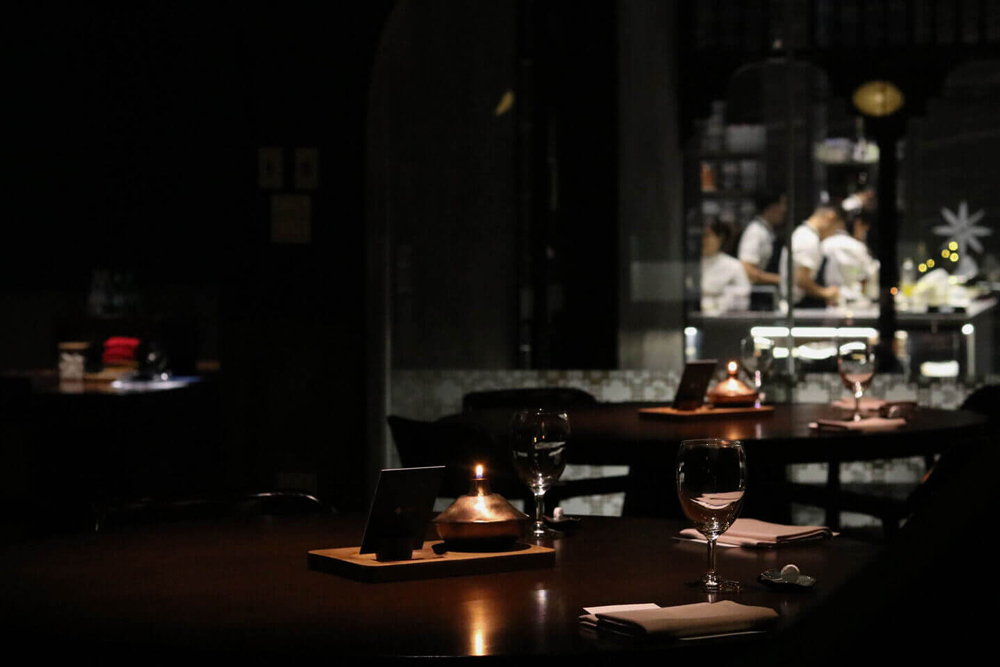
Eating in Hanoi is an adventure — one that rewards curiosity, flexibility, and just a little bit of preparation. Whether you’re chasing Michelin stars or sitting shoulder-to-shoulder with locals at a tiny food stall, these insider tips will help you make the most of every bite.
If you’re planning to dine at one of Hanoi’s fine-dining or Michelin-starred restaurants, such as Gia or Tầm Vị, booking ahead isn’t just smart — it’s non-negotiable. Tables often fill up weeks in advance, especially during Hanoi’s beautiful autumn season in October, when travelers from all over the world flock to the city. Make your reservation early, and don’t hesitate to confirm it a few days before — it’s the best way to ensure you don’t miss out on an unforgettable meal.
When it comes to finding the best restaurant in Hanoi, your best guide is the people who’ve just eaten there. On Google Maps or TripAdvisor, always sort by most recent reviews — they’ll give you the freshest insight into a restaurant’s current quality and service. But for street food? The rule is even simpler: follow the crowd. If you see a cluster of locals on motorbikes parked in front of a tiny stall, that’s your sign. No marketing, no Michelin star — just pure, time-tested flavor.
Hanoi is modernizing quickly, but when it comes to dining, cash still reigns supreme. Most high-end restaurants accept credit cards, but the majority of local eateries, cafés, and especially street vendors operate on a cash-only basis. Always keep some Vietnamese Dong (VND) in small bills for convenience — you’ll need it for your morning phở, your afternoon bánh mì, and that irresistible late-night bún chả you stumble upon down a quiet alley.
These small details might seem simple, but they can make the difference between a good trip and a great one. In Hanoi, a little preparation leads to the kind of dining memories that stay with you long after your flight home.
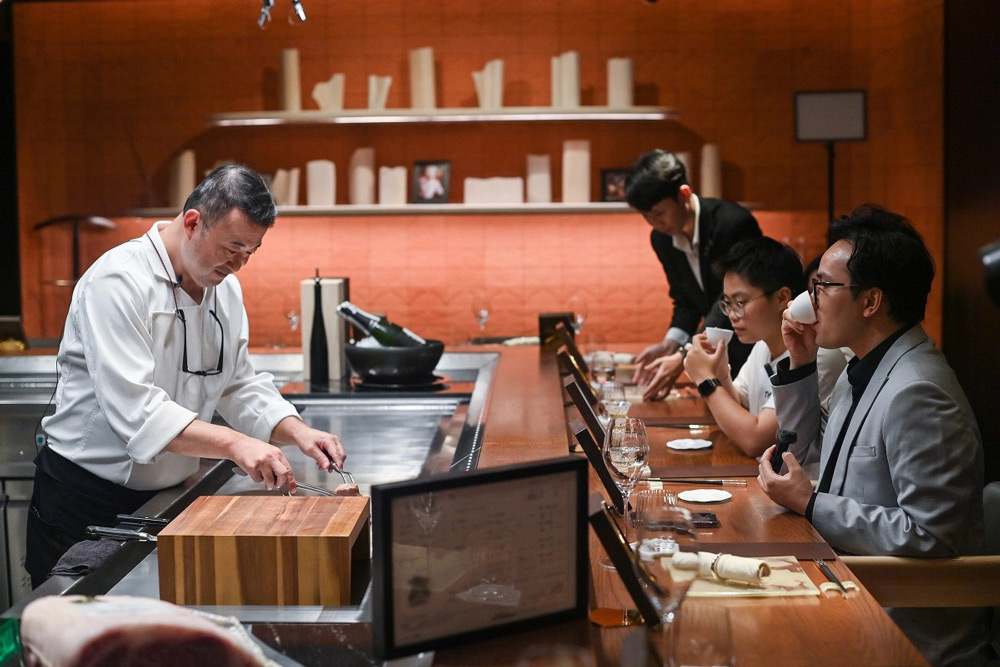
Before you make your dinner reservations or wander into the next food stall, here are a few quick answers to the most common questions travelers ask about Hanoi’s dining scene.
Absolutely! Hanoi officially entered the global fine-dining spotlight when the Michelin Guide arrived. As of 2025, the city proudly boasts several Michelin-starred restaurants — including Gia, Hibana by Koki, and Tầm Vị. Each offers a completely different experience: Gia reimagines Vietnamese flavors with a modern twist, Hibana by Koki delivers world-class Japanese teppanyaki, and Tầm Vị serves timeless Northern dishes with elegant authenticity.
If you have time for just one dish, make it Bún Chả — smoky grilled pork served with vermicelli noodles and fresh herbs. It’s the meal that captures Hanoi’s essence: bold, aromatic, and full of personality. Of course, no trip is complete without a steaming bowl of Phở, Vietnam’s national treasure, best enjoyed at breakfast when the city is just waking up.
That would be Bún Chả Hương Liên, the now-legendary spot where President Obama and Anthony Bourdain shared a meal back in 2016. Located in the Hai Bà Trưng District, it remains one of the city’s busiest and most beloved eateries — even earning recognition in the Michelin Bib Gourmand list for its incredible value.
If you want to experience Hanoi’s heart through its food, the Old Quarter is the place to start. For a legendary bowl of noodle soup, try Phở Gia Truyền Bát Đàn — where locals line up early for breakfast. For something a bit more refined but still authentic, Grandma’s Restaurant offers beautifully prepared traditional dishes in a cozy setting. And truthfully, part of the fun is exploring — the Old Quarter is packed with hidden gems waiting to surprise you.
Not at all — at least, not by international standards. Dining at a Michelin-starred restaurant in Hanoi can cost a fraction of what you’d pay in Europe or North America. You can enjoy a full tasting menu at Gia or Tầm Vị for what might be the price of a casual lunch in Paris or London. In Hanoi, fine dining doesn’t mean breaking the bank — it means celebrating flavor, creativity, and incredible value.
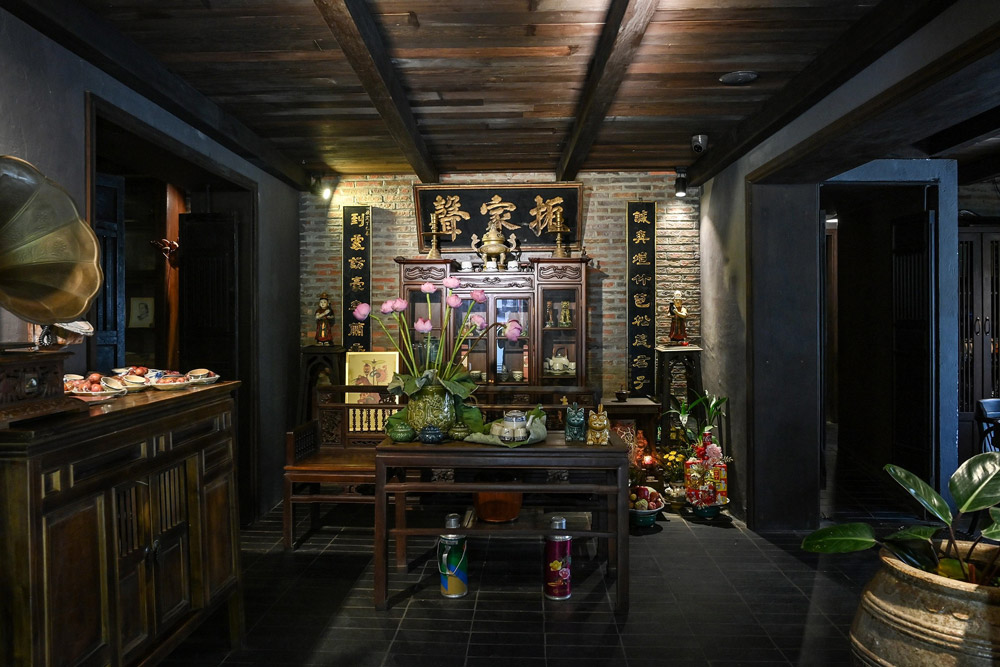
The beauty of dining in Hanoi lies in its wonderful unpredictability. The best restaurant in Hanoi might not have a fancy name or a glossy menu — it could just as easily be a small corner stall with two plastic stools and a pot of simmering broth. Here, fine dining and street food share equal respect. Every bite tells a story — of family recipes, local ingredients, and generations of passion poured into each dish.
What makes Hanoi so special is how effortlessly it caters to every kind of traveler. You can spend one night savoring an elegant tasting menu at Gia and the next morning slurping hot phở on a misty sidewalk — and both meals will feel equally authentic, equally unforgettable. The city doesn’t draw lines between “fancy” and “simple”; it celebrates flavor in all its forms.
So, use this guide as your compass, but don’t be afraid to wander. Follow the scent of grilled meat, the clatter of chopsticks, or the laughter spilling from a tiny eatery. Whether you sit under glowing lanterns or a tin roof, you’re guaranteed to find a meal that lingers long after you’ve left the table. Chúc ngon miệng! (Enjoy your meal!)
Planning your culinary adventure in Vietnam? If you want to experience Hanoi’s best restaurants — from hidden local gems to Michelin-starred icons — without the stress of planning, let Asia Mystika, a trusted Vietnam-based tour operator, take care of the details. Their local experts can craft a custom food itinerary that combines culture, comfort, and incredible flavor, so all you have to do is sit back and enjoy every delicious moment.
Contact Asia Mystika today to plan your perfect trip to Vietnam — and get ready to eat your way through the heart of Hanoi.
WhatsApp: (+84) 866.22.7878
Planning trip: Click here
Email: sales@asiamystika.com
Website: www.asiamystika.com
Asia Mystika Profile: Click Here